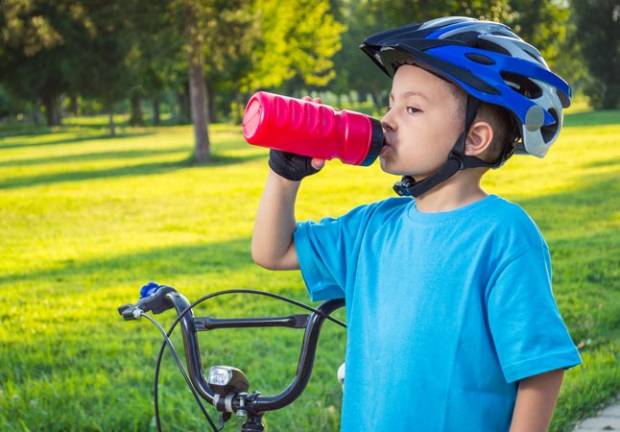Keep your children safe while having fun in the sun

When school’s out, and the books are packed away, the kids will be ready for some summer fun.
Summer is the perfect opportunity to spend lots of time outside being active, whether it’s swimming, hiking, biking, sports camps or just hitting the park.
With more outdoor fun comes increased risk of injury. It’s important to be aware of the potential dangers in summer sports and to take steps to stay safe. Christine Boyd, MD, a Pediatric Sports Medicine physician at Stanford Children’s Health, has some important recommendations for parents to keep in mind this summer season.
Helmet safety
Helmets should be worn whenever a child is on wheels. This includes bicycles, scooters, skates, rollerblades and skateboards.
The helmet must fit properly and be sport specific. Find out more about fitting bike helmets properly at the National Highway Traffic Safety Administration.
Set a good example: Adults need to wear helmets too.
Water safety
Adult supervision at all times is of paramount importance. No child is "drown proof."
Avoid distractions while watching children in the water.
Don’t dive into shallow pools or unknown water.
All pool drains should have covers. Suction from pool and spa drains can trap an adult or child under water.
Sun safety
The best line of defense is covering up. Put on hats, sunglasses and SPF-rated clothing.
Stay in the shade whenever possible, and limit sun exposure during peak-intensity hours (between 10 a.m. and 4 p.m.).
Use a sunscreen with an SPF of 15 or greater that protects against UVB and UVA rays, and apply it both on sunny and cloudy days.
Reapply sunscreen every two hours or after swimming or sweating.
Use extra caution near water and sand as they reflect UV rays and may result in a quicker sunburn.
Hydration and heat safety
Keeping well hydrated is very important. Children should be reminded to drink.
Adequate hydration should be enforced. A child weighing 90 lbs should drink 5 oz of cold tap water every 20 minutes, and an adolescent weighing 130 lbs should drink 9 oz every 20 minutes, even if the child does not feel thirsty.
On hot days, sports practice and outdoor games should be shortened and more frequent water breaks should be instituted.
Clothing should be light colored and lightweight and limited to one layer of absorbent material to facilitate evaporation of sweat.
Seek medical attention immediately for any signs of heat-related illness.
Discover more about our Children’s Orthopedic and Sports Medicine Center.
Source: Stanford Children's Health: healthier.stanfordchildrens.org